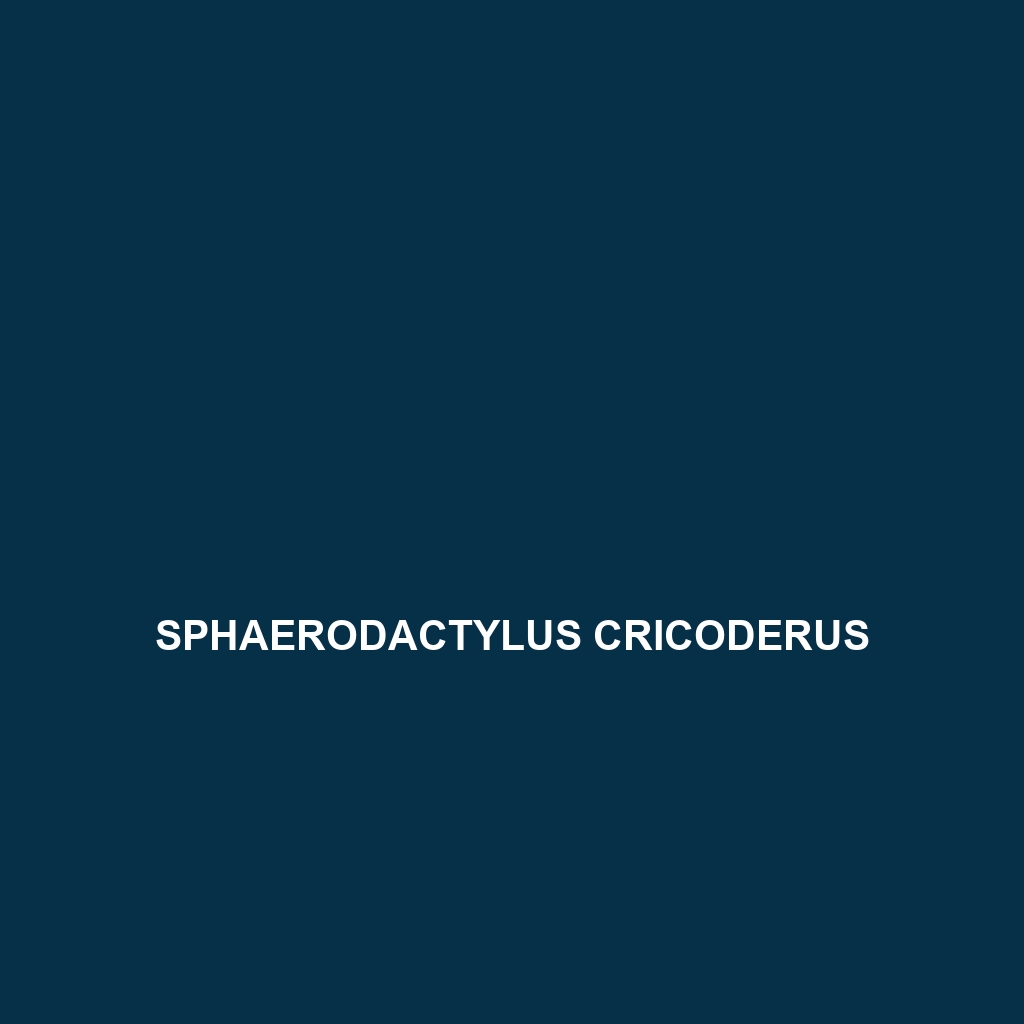Common Name
Sphaerodactylus cricoderus
Scientific Name
Sphaerodactylus cricoderus
Habitat
Sphaerodactylus cricoderus is primarily found in the lush landscapes of the Caribbean, particularly in the western part of the Greater Antilles. This species thrives in diverse habitats, including tropical and subtropical rainforests, where dense vegetation provides ideal cover. Additionally, Sphaerodactylus cricoderus is often found in coastal regions, such as mangroves and marine habitats that lie along the sandy shores. The climate in these regions typically features warm, humid conditions year-round, offering a suitable environment for this small lizard, which prefers warm temperatures for optimal activity. The rich biodiversity and specific environmental conditions of rainforest and coastal ecosystems are crucial to the survival of this unique species.
Physical Characteristics
The Sphaerodactylus cricoderus exhibits distinctive physical characteristics that set it apart from other species in the Sphaerodactylus genus. Adult individuals typically reach a total length of approximately 4 to 5 inches, depending on their age and local environmental conditions. The body is slender and elongated, covered with smooth, shiny scales that often display rich, earthy tones ranging from tan to dark brown, helping it camouflage among the forest floor or sandy environments. One notable feature of Sphaerodactylus cricoderus is its relatively large, bulging eyes that enhance its nocturnal vision, allowing it to hunt and navigate effectively at night.
Behavior
Sphaerodactylus cricoderus is primarily a nocturnal species, exhibiting unique behaviors that are essential for its survival. During the daytime, these lizards will often seek shelter in crevices or under leaf litter to avoid predation and conserve moisture. At night, they become active foragers, displaying a fascinating social structure that includes territorial displays among males. Mating rituals typically occur shortly after the rainy season, during which males perform elaborate courtship displays to attract potential mates. Social interactions can be observed during feeding times, as these lizards often establish dominance hierarchies within their habitats.
Diet
The diet of Sphaerodactylus cricoderus is primarily insectivorous, consisting mainly of small insects and other arthropods. Their feeding patterns indicate a preference for ants, termites, and various small beetles found in their environment. Due to their size, these lizards have adapted to capturing prey that is suitably small, utilizing their agile bodies and quick reflexes. Interestingly, Sphaerodactylus cricoderus is also known to ingest small amounts of plant matter, highlighting its opportunistic feeding behavior as an omnivore in times of food scarcity.
Reproduction
The reproductive cycle of Sphaerodactylus cricoderus is closely linked to seasonal patterns in their habitat. Mating typically occurs during the wet season, from late spring to early summer, when environmental conditions are most favorable for the survival of offspring. After successful mating, females lay a clutch of 1 to 4 eggs in well-hidden sites, such as under rocks or in decaying leaf litter. The incubation period lasts about 6 to 8 weeks, during which the eggs are protected from potential predators. Once the hatchlings emerge, they are independent and must immediately adapt to the challenges of their environment. The parental investment in this species is minimal, with adults offering no care after the eggs are laid.
Conservation Status
Currently, the conservation status of Sphaerodactylus cricoderus is classified as vulnerable due to habitat loss and degradation caused by human activities, including deforestation and urban development. Invasive species in their native range also pose a significant threat to their populations. Conservation efforts are underway to mitigate these risks, including habitat restoration projects and the establishment of protected areas. It is crucial to assess the long-term viability of Sphaerodactylus cricoderus populations, as their decline could have broader ecological implications.
Interesting Facts
One unique aspect of Sphaerodactylus cricoderus is its ability to regenerate its tail after losing it, which aids in escaping from predators. This regenerative capability is a fascinating adaptation found in several lizard species. Additionally, the patterns and colors of their skin can change slightly based on their environment, serving as a form of camouflage against various backgrounds.
Role in Ecosystem
Sphaerodactylus cricoderus plays a critical role in its ecosystem as both predator and prey. By feeding on insects, it helps regulate pest populations, contributing to the overall health of its habitat. Conversely, it serves as a food source for larger predators such as birds and snakes, thus reinforcing the food web. The presence of Sphaerodactylus cricoderus can indicate the ecological health of its environment, as it is sensitive to changes in habitat quality and biodiversity. Maintaining the balance of these relationships is essential for the sustainability of the ecosystems in which it resides.
